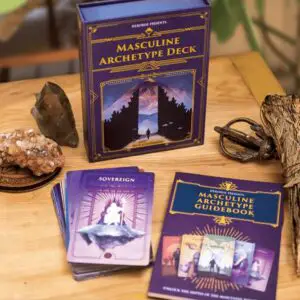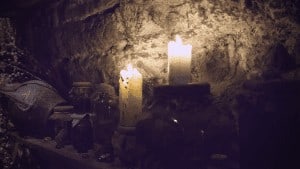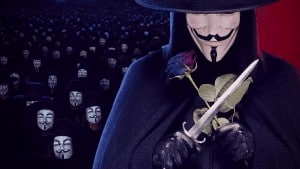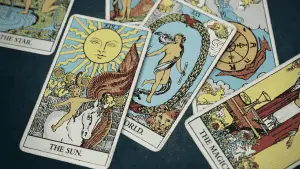There is something alluring about the masculine symbolism found in ancient and occult literature. Symbols represent different ideals, roles, and characteristics expected of men when these texts were written. In this blog post, we’ll explore some of these symbols and their meaning.
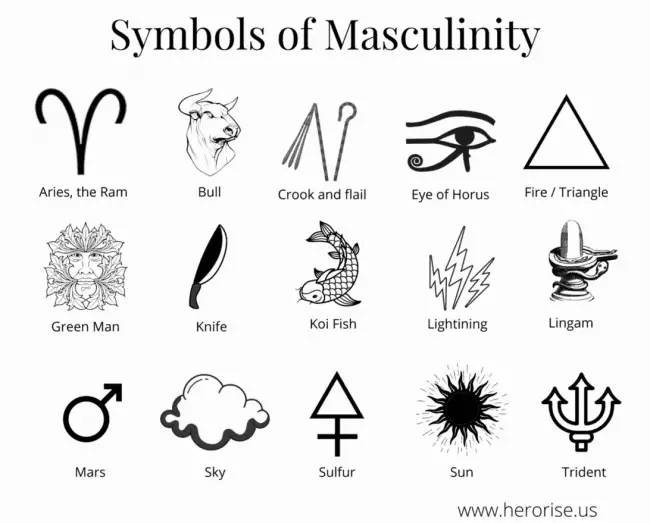
Aries: The Symbol of the Ram
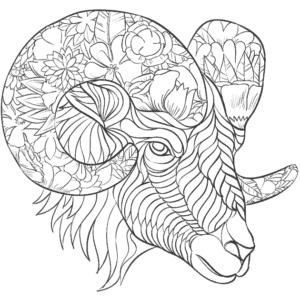 The symbol associated with the first sign of the zodiac, Aries, is represented by a Ram. As a cardinal fire sign, it owes its dominance to Mars and represents virility and command.
The symbol associated with the first sign of the zodiac, Aries, is represented by a Ram. As a cardinal fire sign, it owes its dominance to Mars and represents virility and command.
Aries has been used as a symbol of Masculinity in many cultures. For instance, the ram’s head was originally worn by ancient Egyptians to denote their position as ‘Lord of Animals.’
The symbols associated with Aries are red-blooded males who lead by action and passion. They’re good at getting things done because they know what needs to be done, and they do it.
Bull: Symbol of Masculine Virility
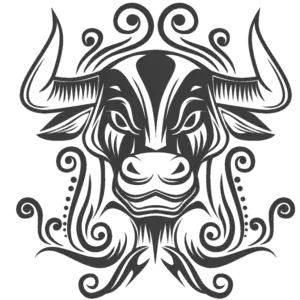
The bull has been a symbol of Masculinity in many cultures. It is traditionally used as a symbol of power, fertility, and virility. In ancient Mesopotamia, the bull represented masculine strength.
The Egyptians worshipped the bull, associating it with virility. They believed that the wild bulls were under their control for six weeks every year during mating season when females were not fertile.
During Pharoah Ramses II, Egyptian women would drink a potion containing the extract from wild bull testicles and semen to increase fertility.
In ancient Greece, bulls were sacrificed at major religious festivals in honor of Zeus. The sacrifice depicted his death as well as his rebirth from the ashes of the fire.
In Australian rituals, the sacred object of the bull-roarer mimics thunder or a mans bellowing when swung around. Similarly, in religious rites of North America’s Southwest, an instrument such as the bull-roarer is used during male initiation ceremonies to evoke the high God.
Crook and Flail: Leadership and Protection
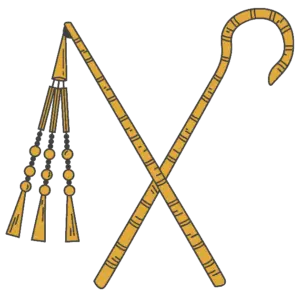 The crook and flail are a symbol of masculine fertility. The crook is a shepherd’s staff and represents leadership, while the flail was used in ancient agricultural processes to separate the grain from the chaff.
The crook and flail are a symbol of masculine fertility. The crook is a shepherd’s staff and represents leadership, while the flail was used in ancient agricultural processes to separate the grain from the chaff.
In Egypt, the Crook and Flail also represented the balance between chaos and cosmic order.
In Christian iconography, Christ was often depicted with a Crook and Flail to signify his role as protector of flocks from wolves. In ancient Rome, these two instruments were used by shepherds when leading a flock of sheep.
The Crook and Flail are also symbols in Freemasonry, where the flail is seen as an occult symbol for agriculture and agriculture’s suitability to man’s nature. At the same time, the crook represents authority over lower life forms (sheep).
Eye of Horus: symbol for protection and health
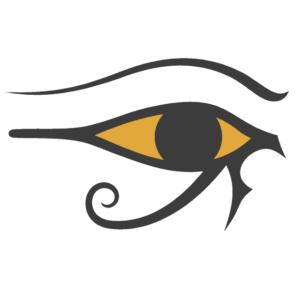 The Eye of Horus is a symbol of Masculinity due to its association with the right eye of Horus.
The Eye of Horus is a symbol of Masculinity due to its association with the right eye of Horus.
Horus and Seth, the God of chaos, were fighting. Moments later, Seth took out Horus’s eye. Hathor (consort of Osiris) managed to restore his eye, and Horus offered it to Osiris as a sacrifice for him to die again and be resurrected back into life so that he could rule over the Underworld with Hathor by his side.
The Eye of Horus is seen as a symbol for protection, health, and the all-seeing eye that can also be interpreted in Christian symbolism to represent God’s watchful care over us. It was believed that just by making an image with their hand or fingers, they could magically invoke the power of this protective amulet against evil forces.
Fire: Alchemical Symbol of Masculinity
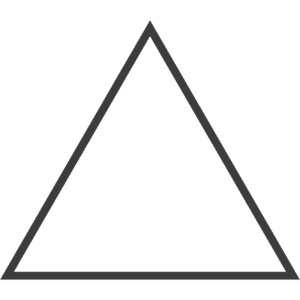 Fire is one of the elements in alchemy that symbolizes emotions of passion, love, anger, or hate. The occult attributes of fire is associated with Masculinity, while water (in alchemy) is considered feminine.
Fire is one of the elements in alchemy that symbolizes emotions of passion, love, anger, or hate. The occult attributes of fire is associated with Masculinity, while water (in alchemy) is considered feminine.
The alchemical symbol for fire is a triangle pointing upwards; this signifies that for something to burn, you need heat plus oxygen. The upward-pointing arrow indicates the movement of energy from one place to another.
The triangle has also been used to represent Masculinity in many cultures. In ancient Spartans, the triangle was associated with manliness. We still see its use in military symbolism, such as the chevron.
Green Man: Symbol of life renewal
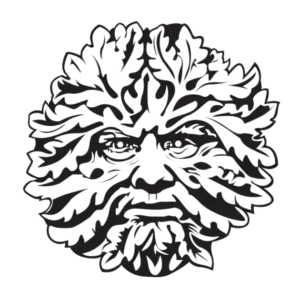 In mythology, the green man was often used to represent themes such as life renewal or fertility. The reason the symbol is masculine is that it is related to the male reproductive cycle.
In mythology, the green man was often used to represent themes such as life renewal or fertility. The reason the symbol is masculine is that it is related to the male reproductive cycle.
Sometimes he would be portrayed with leaves coming out of his head or behind him, which signified foliage—the life force that moves through all living things and produces new growth.
The Green Man has generally been associated with fertility cults, but this image can be found throughout Europe. The Green Man can be seen in church carvings during the Renaissance era and on pagan religious sites.
Knife: Ritual Tool and Authority
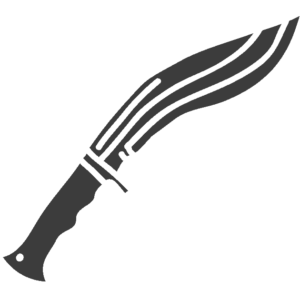 From the earliest times as simple tools for survival, knives have always been symbols of strength and Masculinity. Some cultures in the middle east still wear a knife as a symbol of authority and masculine power.
From the earliest times as simple tools for survival, knives have always been symbols of strength and Masculinity. Some cultures in the middle east still wear a knife as a symbol of authority and masculine power.
In Chinese culture, a knife is an emblem of power and is often used to make sacrifices to honor the ancestors and seen as a masculine tool.
The Celts would also use knives for sacrificial offerings. Still, they believed that it was the sword that symbolized strength and Masculinity–a belief similar to Eskimos who would use knives to represent strength but did not know what a sword was.
Knives are also symbols representing the phallus—the male sexual organ–and can be seen on decorative items throughout Japanese culture.
Koi Fish: Symbol of Success
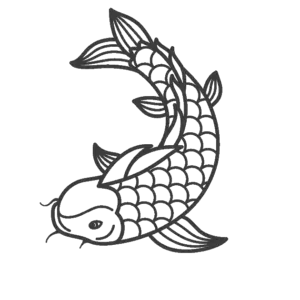 The Koi fish (depending on the color) represents Masculinity in Japan.
The Koi fish (depending on the color) represents Masculinity in Japan.
“The black koi is associated with successfully overcoming an obstacle and symbol of Masculinity in Japan represents the father. It often recognizes a successful battle through struggle in one’s life.” – Bangkok Tattoo Studio.
There is still a strong association between fishing and Masculinity. The troupe of men going fishing. There is also a modern equivalent of men holding fish in their tinder profile (If you haven’t heard about this, talk to a female friend that’s dating. It is hilarious)
Lighting: Symbol Of Zeus and Sky Gods
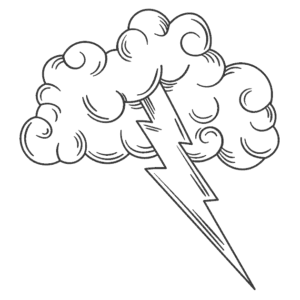 Lighting is strongly associated with Zeus, the God of the Greek pantheon. Zeus was known to be the bearer of lightning bolts and thus would often use them sparingly, making him seem more powerful when he did so.
Lighting is strongly associated with Zeus, the God of the Greek pantheon. Zeus was known to be the bearer of lightning bolts and thus would often use them sparingly, making him seem more powerful when he did so.
In the Vedic religious tradition, Indra exemplifies a particular set of conceptions about the masculine nature of the sacred. Indra personifies lightning and cosmic projectiles (shakti).
Ancient cultures also associated lighting with the masculine nature of fire and violence, such as Inuit culture’s belief that lightning was a weapon used by malevolent spirits to abduct people, or Norse mythology’s Thor wielding his hammer (Mjollnir).
Lingam: phallic symbol of Shiva
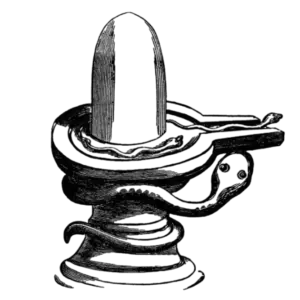 One of the most potent symbols of Masculinity is seen in Hindu spirituality in the Lingam, which represents Shiva. The Lingam is the phallic symbol of Shiva and a representation of his Masculinity.
One of the most potent symbols of Masculinity is seen in Hindu spirituality in the Lingam, which represents Shiva. The Lingam is the phallic symbol of Shiva and a representation of his Masculinity.
The lingams represent him as an active male god and are found in various forms:
- Cylindrical pillars or columns.
- Obelisks with the pyramidal top consisting of five to eight tiers called Shivalinga (meaning “the sign that linga is present”).
- Hemispherical dome-like structure.
Lingams are often installed in pairs to represent the male and female aspects of God, Shiva, or Shakti. One Lingam symbolizes radiance and creativity, while the other one represents nurturing energy and substance.
The ancient texts describe these symbols as two parts – a cylindrical shape and a pyramidal top – that form the whole.
The Lingam is used as an object of worship in Hindu temples, where it may be embedded into walls or shrines; to symbolize the union with God/the ultimate reality.
Mars: Classic symbol of “male”
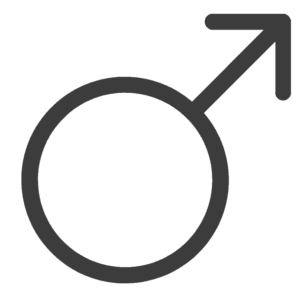 Mars has long been associated with the “male” symbol.
Mars has long been associated with the “male” symbol.
Mars is the Roman God of war. He has been associated with Masculinity since ancient times. Mars was also considered to have ruled over both male sexuality and fertility and strength, violence, and combat.
When Mars, the planet, was discovered, its name was chosen because the color red is sacred to the God Mars. This may be due to the association of blood (life force) with life-giving qualities in ancient times – which implies a connection to masculine power and virility.
Sky: Symbol of Father Sky
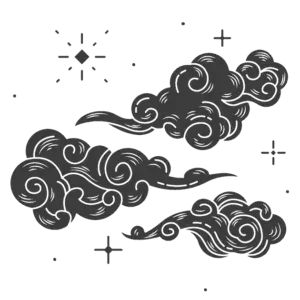 Some Native American cultures associate the sky as “Grandfather Sky”, a masculine figure.
Some Native American cultures associate the sky as “Grandfather Sky”, a masculine figure.
The Navajo tribe also associates the Sky with Masculinity in their creation story. The Lakota believe in the sky god Skan (or Nagi Tanka), the supreme masculine authority.
Underneath the sky is “Mother Earth”, a feminine figure. This creates balance and unity between two concepts that many cultures see as essential in life.
The sky also has other meaning, such as masculine figures like Apollo (Greek mythology), Zeus (Roman Mythology), or Mithras from Persian/Median religion have connections to solar.
The sky also has ties to Masculinity in Hinduism, where Lord Indra was seen as “Lord of Heaven” and protector of society against threats caused by fear of evil spirits.
Sulfur: Alchemical Symbol of Masculinity
 In Alchemy, sulfur is the male counterpart to mercury’s female representation.
In Alchemy, sulfur is the male counterpart to mercury’s female representation.
Sulfur is one of the oldest occult symbols associated with Masculinity. It was used in traditional medicine by many diverse cultures, including Judaism and Christianity. Sulfur also has properties similar to those mentioned above as representing masculine power, such as dryness and expansion.
In antiquity, sulfur was used as traditional medicine in many diverse parts of the world. It is mentioned both in the Torah and Bible, where it’s said to be one of the smells emanating from Hell.
Ancient Egyptians believed sulfur could purify water or a person who was sick or possessed by evil spirits.
Sun: Symbol of Glory
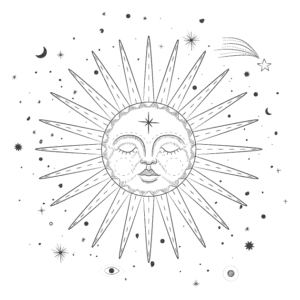 The sun has a strong history of representing the Masculine.
The sun has a strong history of representing the Masculine.
The sun is often depicted as a masculine figure. In ancient Rome, the Sun god Sol was sometimes personified as “Solis Invictus,” or unconquerable sun.”
In Ancient Greece, Helios is seen as an all-masculine figure that personifies the sun. The Greeks also associated him with the “courageous pursuit of glory,” which undoubtedly reinforces his Masculinity in their culture.
Sun worship is also a common religious practice in many cultures. In Ancient Egypt, Ra was seen as the masculine sky god who rules over all other gods or deities.
In Norse mythology, Baldr’s death by fire and sun-related corruption of nature caused an upset among the Norse pantheon with significant implications for society.
Some countries, including Africa and continental Australia, worship the sun as a means of expressing Masculinity. The Tiv of Africa beleive the sun is the male child of the supreme being Awondo. Similarly, among the Wiradjuri and Kamilaroi of southeastern Australia, the sun is the son of their creator god.
Read more in my article about the Masculine Sun and Feminine Moon.
Trident: The Three Spiked Weapon
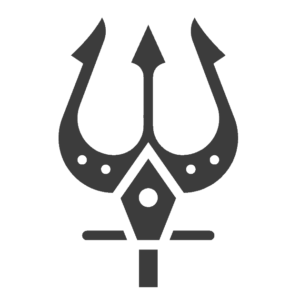 The traditional symbol for Masculinity, the trident, is made of three spikes. It is used in a variety of cultures to symbolize power- both earthly and supernatural- and its most well-known owner was Neptune. The God would use his weapon to control the sea as well as inflict earthquakes on earth.
The traditional symbol for Masculinity, the trident, is made of three spikes. It is used in a variety of cultures to symbolize power- both earthly and supernatural- and its most well-known owner was Neptune. The God would use his weapon to control the sea as well as inflict earthquakes on earth.
You also see the trident in Vedic mythology. In Hinduism, it is the weapon of Shiva. The three prongs are often said to signify various trinities—creation, maintenance, and destruction; past, present, and future.
In Islam, you see the trident in the form of a crescent moon and star. To Muslims, this symbol combines heavenly power and earthly strength to represent Masculinity.
In Taoist practices, the trident symbolizes Heaven’s highest authority. As a ritual object in Taoism, it is used to invoke deities and call spirits.
In conclusion
Symbols can be a powerful way to connect to a deeper past filled with myths and stories. Symbols are one of humanity’s oldest means of communication because it doesn’t need language- it’s universal. When you read the symbols, your brain is instantly flooded with images and feelings. Symbols are a way to connect to something bigger than yourself.
I hope that this article has helped you see these ancient masculine symbols from different perspectives.

